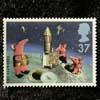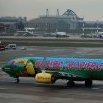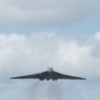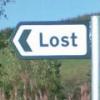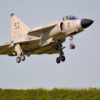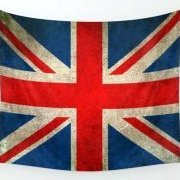Search the Community
Showing results for tags 'alclad'.
-
Hi all - Here's my latest - Tamiya's P-51D in 1/48 - An enjoyable build although as ever, Tamiya's decals put up quite a fight. The kit is old but still top quality - it goes together very nicely - My one issue is the way the canopy is attached - with no framing where it meets the plastic. I added scratch built details to the wheel bays, used a Eduard PE cockpit interior with additional parts - also Eduard resin wheels. Painted in Alclad and Tamiya arylics - weathered with oils, enamel washes and pigments. WIP build is here: Thanks for watching Cheers John
- 32 replies
-
- 64
-

-

-
I'll be up front: I don't think this will be my best build, and that's OK. It started as a father/son build with my 6-year-old until I discovered the terrible fit of the fuselage: When I held the tail and the tip of the nose together, the two halves of the fuselage bowed so badly that there was about a 1/8" gap in the seam in the middle (above the wings)!! No Kidding!!! I had a hard time holding it together just dry-fitting it and I wasn't even sure if I'd be able to glue it. At that point, my son decided he was more interested in starting his 1/48 Bf-109. I decided it would be a good model to try out some new Alclad techniques on. I've been using the wings for testing different Alclad finish ideas for my CF-104 build documented here: I was able to glue it after all, but I had to start at one end and exert a lot of force with my fingers while I used my "instant set" super glue. Usually I use a "glue looper", which is a photo etched loop to apply small amounts of super glue and have capillary action pull it into the seam. This was so bad, I had to just use the super glue bottle to apply enough to keep things together. I was able to clean up the super glue that ran, and then sanded the seams: The dark gap along the spine is a very wide gap in the seam filled with super-glue. Here's the bottom: I was able to sand it pretty smooth, but the raised detail was sanded off in the process. If I was serious about this model, I would re-scribe the panel lines, and sand the whole body smooth. But, the detail in this kit is terrible and the fuselage is warped, so it's not worth the effort. Here's how the fuselage lines up, which illustrates how badly the plastic was warped: I can't say whether this was a defective kit, or if it was age or what. I bought the kit in 1997, and never dry fit it until now, so I don't know if it was always like this. It's been kept indoors in a closet, so I don't think environment has anything to do with it. I discovered as I was sanding it that the strain on the plastic from forcing it into shape caused some stress cracks, which I filled with super glue: I wasn't really impressed with this kit because of its low detail and heavy-handed raised panel lines. The warped fuselage makes it even worse. Still though, with a good coat of alclad and the really great after-market decals I got, I think it will look pretty good, and certainly good enough to join my son's squadron of models hanging from his ceiling!
-
I'm looking for a vertical paint rack that will hold a variety of paint pots - Humbrol tins, Alclad (small / large), Xtracrylix As I appreciate budget suggestions, is there a vertical paint rack that I can get that will accommodate all of these? Currently they're all in a shoebox and I need the bench-space. Thanks.
- 3 replies
-
- alclad
- xtracrylix
-
(and 1 more)
Tagged with:
-
Hello folks - now this: With all the buzz about that new P51 kit from eduard, I thought I’d pop this one from the stash and get this oldie but still a goodie made. After my last 2 builds being nmf, I thought I’d do one more - hopefully using the lessons learned and expanding my alclad chops a little further. Also going a scale bigger to 1/48 - more plastic making more fun I hope. It will be nice doing a larger model after so many 1/72s - detailing those smaller models can be hard on the eyes..! (Maybe there’s a part of me that wants this built so I can justify buying the eduard one😀!!! ) In spite of its age, this looks like a pretty sweet kit. I’ve got some aftermarket: A big sheet of pe, including interior, precut masks and some resin wheels - all from eduard. I’m planning on doing petie 2nd - the scheme from the box art: I’m a sucker for nmf and blue schemes so this suits me fine. This image will be my primary source - as you can see she’s a well weathered beast with lots of nice tonal variations on the blue nose and airframe- I’ll be looking to recreate that😊. I understand that this plane survived the war and still flys today - on her 3rd engine:) But mine will be a portrayal of her dirty grimy wartime years. Of course this means using the dreaded Tamiya decals - I did shop around for some aftermarket ones but the good ones all seem to be sold out - maybe because of that aforementioned kit release. Into the build! First job was sticking some pe onto the pilots seat: I went about adding some details to the radio boxes at the rear of the cockpit. I drilled some holes for the wires and glued them in - used different gauges of copper wire. I looked at a few references for the placement of these - which pointed out some big inaccuracies in the kit but not to worry. I made an oxygen line by wrapping some small wire around big wire... First time I’ve tried this and it came out okay I think. I attached some more pe to the side walls: That green is what eduard thinks is correct for usaf interior green. Maybe sometimes it was that colour but I’ll be using a different shade so this is getting painted over. The hose was installed - I used some crystal clear to create the plugs for this - not very successful but it will do... I had already primed the surface with some Tamiya fine so I was now ready for some paint. I mixed up some tamiya flat green and flat yellow - also some interior green and some Olive drab to get this shade - Then lightened it with more yellow to do some highlights. I used a lighter shade on the seat bulkhead as some references showed that this was a lighter shade of green. The black head rest area was painted with Tamiya rubber black - then dry brushed with a light grey colour. The back section was also painted with rubber black and dry brushed in the same fashion - I also hand painted the frame with the same interior green color as before. The floor of the cockpit was painted using different shades of brown and rust colours from Vallejo model colour - more of a nod to wood grain as opposed a full wood grain finish. This will be covered with chipping medium and then a dark grey to simulate the rubber floor. Some details on the radio boxes where painted.. And lastly a quick dry fit to see how I’m going: So that’s it for the first few hours work 😎 With the bigger scale I have to get used to a slower pace but I’m very much enjoying it so far. I’d be keen to hear from anyone who’s built this to see if there’s any issues to be aware of - but from what I can gather it’s supposed to be more or less hassle free. More to follow soon. Thanks for checking in. Cheers John
-
My other builds have got me a bit bogged down as one is a resin that that nothing fits and has a surface like the moon and t'other needs a lot of sanding and filling, so I decided to dust this off and get her into the paint shop asap to try out my various Alcalds that I've had for forever but was inspired by how well they work as shown here. The kit was an Amazon freebie back in January for being a vine reviewer that I did some prep on four weeks ago and promptly forgot so a little timeshifting... Note one piece body/wings, lovely. Canopy with hideous lugs and matching canyons in fuselage, not so lovely IP cloned from Eduard etch Seat from Quickboost but with some bogus painting....note HB tree trunk control stick replaced with something more in scale. Fuselage canyons filled with canopy lugs and smoothed with skimming putty: HB aren't keen on the gear up option but that won't stop me, nor will the ludicrously misshapen and sized gear doors, Cricut Air 2 to the rescue, a smear of Mr Surfacer 500 and she'll do. Zipped up, magnetised, masked and ready for the Alcald grey first thing tomorrow. Toodle pip Anil
- 55 replies
-
- 11
-

-
Good evening folks - so I have this: After nutting out how to use Alclad paints on my last build, (the P-47) I’m going on with another nmf with this one - this has been sitting in the stash for quite a while and now is the time. 😎 I love the vampire- I first saw it as a young boy at an air show in Ireland scorching across the sky. I remember thinking how jealous I was of the pilot - he was clearly having so much fun. That was an Irish Air Force one but this will be a vamp of my adopted home - the RNZAF. At our local Air Force museum they had this hanging off the roof in the foyer: So I’ll be having a crack at building this particular aircraft. I’ve got these to help: Some eduard pe cockpit details, some canopy masks and some decals from a local supplier here in nz who specialises in RNZAF... A look at the sprues: They don’t look too bad considering the age of the kit. I’m planning to rivet the wings to add more texture - technically not necessary as these were hardly visible but I think they’ll add to the finish. The whole kit is just 2 sprues plus these clear parts and this is the old girl in the glory days: I got a better pic somewhere but you can hopefully make out the colours and tones - I won’t be going crazy with weathering on this one but I do want to portray a working airplane - not the museum piece she later became. So references will come from old vampire photos supplemented by the refurbished version images from the museum. She will start out shiny and I’ll work back to a duller silver. That’s the plan. Work on the cockpit will start soon! Cheers John
- 62 replies
-
- 15
-

-
A bit of fun since I have a surplus of red stars.
-
Hi chaps, I'm working on my 1970's Kenner C3-P0 and planning to paint it using Alclad II Gold, however I'm struggling with what undercoat to use. Question: Has anyone used Halfords Gloss black as an undercoat for Alclad II ?? I've been looking and reading various tips and tricks but I thought I would ask to. The Gold needs a gloss black undercoat. I prime my models using Halfords standard car body grey primer - an acrylic that needs cellulose thinners to clean up and I can over paint this with Humbrol Enamels as I've been doing for years without issue. So I did some tests. Test one - was to paint over the grey with Humbrol gloss black. I've left that for about 12 hours and then tried the Alclad and it immediately reacted and crazed the surface. Odd this as I had heard good things about using Humbrol gloss black to undercoat for Alclad. Test two - was to use Alclad's own gloss undercoat (over the grey) and then gold - this seems to work well but I have read lots of people say that the Alclad black does not dry at all so I'm worried about using thins combination. Test three - was using Halfords satin bumper black over the grey (random choice as I had it on the bench) and this also worked very well. Any suggestions would be great;y received. Kind regards Karl
-
A quickie to test Alclad, fourth finish of the year. Changed the photosetup a little and started futzing about with softboxes , looks a bit better...As is my current thing, everything is brand new, shiny and very pilotless. The kit is simple and has a mixture of good details and strange quirks as you'd expect for a £7 kit, for those interested there's an RFI here. Onto the pix:
- 16 replies
-
- 18
-

-
- Hobbyboss 1/72
- F-86F
-
(and 1 more)
Tagged with:
-
We join this work in progress... in progress (I started before joining BM). Last year I did a Hasagawa F-104 from about 1986 (ugh, terrible kit) and used a decal set from Belcher Bits to make it a gray/green camo, low viz CF-104. In the course of doing that, I decided I really liked the early NMF CF-104s and the decal set included decals from that era. So I bought this kit. For the most part I've had good experiences with Hasagawa kits. This one.... isn't quite one of them so far. The build has stalled out; I'd hoped it would be an easy build, maybe a couple of weeks, but it's been over a month because I'm procrastinating fixing the seam between the front half and back half , and because I still can't quite figure out how I want to apply the Alclad (This build also is part of my on-going quest of getting a realistic natural metal finish. More on that later though). Now, here is where I've gotten so far: "she doesn't look like much, but she's got it where it counts!" Well, maybe. The detail is top notch, and by and large the fit is really nice, with a couple major exceptions. First, the panel containing the cannon was a separate piece and didn't fit well, so I had to use super glue to fill in the gaps and sand it flush. Second, there is a front half and a back half, and when I glued them together, there was overlap. it didn't matter how I positioned them, there was overlap somewhere: It may not look like much, but I'm going to have to bust out the files to get that flush! Another gripe is that the plastic looks like it sunk a bit, so at the seams on the bottom, it is a little concave. Luckily it's only on the bottom because I filled and smoothed it out to the best of my ability, but I'm not crazy about how it turned out. The cockpit had the option to paint the instrument panel or apply a decal. I decided to paint it: The panel was painted Dark Gull Gray with black, olive green and red in appropriate places. I just used a magnifying glass and a tiny brush. The side panels are black with Testors Steel dry-brushed on. My reference photos showed a dark grime around the outer parts of the head rest and seat cushions, so I tried to replicate that by using tamiya weathering pastels around the edges. I've already painted the wings (Mr. Color, white on top, Light Blue on the bottom) and black-based them, using Mr. Surfacer 1500 black as a primer and then marbling on the white (or blue) and then misting on the color to blend it all together. It's a little too subtle in the picture, but looks about right in real life. I also did the fuel tanks and horizontal stabilizer, which were all red. I had a hard time matching the red: I thought it should be Chevy engine red, but that was too orange. So I put a light coat of Ford engine red and that seemed to match the decals OK. I also black based these: I had to paint and assemble the main gears. These I primered with Tamiya gloss black spray, and put a coat of Alclad Polished aluminum on, followed by a very light coat of Alclad aluminum to cut the shine down a bit. I coated that with Alclad Aqua Gloss, then used a wash of black oil paint in paint thinner to bring out the details. When this had dried, I sealed it with Testors Metallizer sealer. I've found that Alclad will pull up with tape once in a while, so I try to do all the other colors first and mask them before doing the alclad. That's why the nose, intakes, and red rectangles before the intakes are masked in these pictures. Finally, I did the metal in the back part of the fuselage, because it looks different from the rest of the body: Same routine here as with the main gear bay: Black gloss, followed by Alclad stainless steel. On the left in this picture is the stainless steel. The darker part to the right, I put a very light over coat of Alclad steel and the lighter looking part has a light coat of Alclad dark aluminum. I think the light part is too light, so I may have to look at that again. Next steps: Mask the metal in back, mask the gear bays, and fix that seam in the middle (ugh). Then it will be time to Alclad this bad boy!
-
Hi all, So, I've ventured in to the world of Alclad... And royally cocked it up! I don't want to sand everything back as I'll lose all the panel lines and rivet details, but don't know how to strip the Alclad away. Anyone got any sneaky tips and tricks??? Cheers, James.
-
A couple of years ago, after I started airbrushing, I picked up a few Alclad 2 metallic paints. They took a bit of trial and error to get used to, and seemed to need careful surface preparation, but the results looked nice. However, they need good ventilation - I normally use an extractor hood, but advice is to wear a decent facemask as well. I also saw advice to be especially thorough in cleaning your airbrush after use. Then a few months ago I was at a show and saw Vallejo's Metal Colour acrylic range being demonstrated. They looked good, so I bought a couple and tried them out. Again, a bit of care is needed, but the result seemed good and they were far less smelly and cleaning my airbrush seemed a lot easier afterwards. I've since bought several more from the range but thought I'd do a test to see how they and the Alclad 2 paints compared. This is, I must emphasise, a rough and ready test. I sprayed four different primers on some gloss while board I had spare, and then sprayed a range of Vallejo Metal Color and Alclad 2 across them. The finish isn't always good - I wasn't taking my time, and I was more interested in getting good coverage than avoiding any blemishes or runs. However, the results were quite illuminating. Primers, from top to bottom: 1) Tamiya fine white primer, from spray-can. 2) Mr Surfacer 1000, from spray-can. (none - plain white paint) 3) Vallejo gloss black polyurethane primer 4) Alclad 2 gloss black base coat (Ignore the splotches to the left, that was a quick test with some AK True Metal paste) From left to right: 1) Alclad 2 Exhaust Manifold 2) Aclad 2 Magnesium 3) Alclad 2 Stainless Stee 4) Vallejo MC Exhaust Manifold 5) Vallejo MC Gunmetal 6) Vallejo MC Magnesium 7) Vallejo MC Burnt Iron 8) Vallejo MC Steel 9) Vallejo MC Silver 10) Vallejo MC Dark Aluminium 11) Vallejo MC Semi Matte Aluminium Generally (and not surprisingly) lighter and shinier shades benefit more from a dark background. Most to some extent are affected by the nature of the primer; the least affected were the darker or duller shades such as Magnesium or Exhaust Manifold. Vallejo Silver worked noticeably better on a lighter primer. Vallejo Polyurethane Black Gloss primer is noticeably much less glossy than the Alclad 2 black gloss. The latter worked perfectly well as a base for the Vallejo acrylics. The real surprise though was the difference between the two primers when Alclad Stainless Steel was sprayed on top; the Alclad 2 base resulted not only in a darker finish but one that was visibly blue-tinted. That's not necessarily a bad thing, especially if you want a hot-metal effect, but it's worth noting. Alclad Stainless Steel is much brighter than Vallejo Steel (but they are aiming for rather different finishes). Alclad Magnesium is somewhat lighter than its Vallejo counterpart; to my mind the Alclad shade is more representative of real-world magnesium, but the Vallejo shade is not unrealistic and I suppose you could use them both for contrast. Slightly to my surprise, Vallejo's Dark Aluminium came out lighter than its Semi-Matte Aluminium. Overall, this has reinforced my view that Vallejo Metal Colour acrylics work very well, but it has also prompted me to hang on to my Alclad 2 paints; they may be smellier to use and require more airbrush cleaning, but their Magnesium is a bit better than the Vallejo equivalent, and the variability of the Stainless Steel depending on the base coat gives the option of achieving some interesting effects.
-
Hi guys, I am intending to use Alclad for an NMF paint and heard that it requires a coat of some kind of micro filler first and then good sanding down of it. Can someone help me out which tools are best for this and how to it right? Thanks in advance. Cheers, Michael
-
Hi all. My most recent project has come to an end. Minicrafts little 737 kit is rather simple, but also a joy to build. Added antennas, and beacon lights. Decals are from Max decals. Paint from Xtracolor (Maersk blue) Humbrol ("Boeing grey", corroguard, nose) and Alclad for leading edges of wings and vertical/horizontonal stabilisors. Here goes: Cheers Robin
-
Hello and thanks for your interest, this is my 1/72 Hasegawa B-24J, representing "The Shack" of 458th Bomb Group, 754th Squadron. The model was built using aftermarket parts from Eduard, CMK, Aires, True Details, Scale Aircraft Conversions and Decals from Sky Models Italy. This beast fought me for over 18 months. Most work went into the paint job. It was painted with Alclad lacquers, which require a perfectly smooth surface preparation. Due to the massive weight (90g) I chose to use metal landing gear from Scale Aircraft Conversions. Photographs by Wolfgang Rabel of IGM Cars & Bikes. ... and here is how it all started.... lots of aftermarket items, lots of motivation and optimism! Cockpit interior: Interior detailling underway: Fuselage halves before closing up: Cockpit again: A lot of weight went into the foward area of the fuselage to prevent a tail-sitter: Model primed Gloss Black (Tamiya14) in preparation for Alclad paints: Paint issues all along the way, of course all my own fault: Making the mask for the code letter "E": Final bits and pieces.... Glad I finished this, even if it took some time and a lot of Patience. But have a look here - there's already a "roll-out" queue on my workbench: Thanks for lookin'. See you next time! Best wishes from Vienna Roman
- 39 replies
-
- 56
-

-
Hey Folks, just a quick question, which one of these Primer is in your opinion the best one? Alclad: http://www.ebay.de/itm/GP-7-46-100ml-Alclad-2-Grundierung-schwarz-grau-weis-zur-Auswahl-/351115725361?var=&hash=item51c020ca31:m:mR_gNQS_JC7RmagWcugvbsw or Ultimate: http://www.ebay.de/sch/i.html?_from=R40&_trksid=p2050601.m570.l1313.TR12.TRC2.A0.H0.Xultimate+primer.TRS0&_nkw=ultimate+primer&_sacat=0 Is this stuff good for applying decals: http://www.ebay.de/itm/Microscale-Micro-Set-Micro-Sol-setting-solution-for-decals-transfers-Free-Post/281710351170?_trksid=p2045573.c100034.m2102&_trkparms=aid%3D555012%26algo%3DPW.MBE%26ao%3D2%26asc%3D20140107091039%26meid%3D370b657083c14fbf9a77fb1010b5974f%26pid%3D100034%26rk%3D4%26rkt%3D6%26sd%3D172274173241
-
Hi folks, I don't know about anyone else, but one of the things I really LOVE about modelling is putting hours and hours into making a project look the best it can be, then finding new and creative ways to ruin it in seconds. I've been preparing Monogram's gigantic 1/48 B-29 for a high gloss Alclad base. Here was the plan: Alclad Grey primer base spray coat of Halfords Satin Black coat of Alclad Honey Primer or Klear Gloss acrylic black finish coat of Klear Alclad high gloss paint finish. I've used this technique for all my previous high gloss finishes which have been spectacularly successful up to now: BUT this time: Step one went well... Step 2 went patchy: Some of the Halfords sprayed areas went like this: I've tried sanding back and respraying - same result, but only on those patches. I continued the full treatment steps 4-6 above, and the texture still shows through, ven though under the light it is completely smooth. I even polished the entire model with compound and applied the Klear coat, it still looks rough. I don't know what Alclad will look like over that surface. Anyone got any idea what I've done or not done, and why it won't go away? Cheers, Al.
-
Good morning! I picked up this kit from Bruntingthorpe on Sunday along with a 1:48 Airfix Lightning. I will be quite honest- this kit is a mixed blessing: Pros: -Great surface detail -Resin exhaust cans and seats -An Eduard photoetch fret included (this contains the instrument panel, belts and various aerials -A large decal sheet (which was barely used, decals sourced from the spares box for my alternative scheme) -Relatively straightforward to build and paint -Positionable flaps Cons: -Almost nothing in the way of guides to tell you where you should place the various parts (cockpit tub, intake cone and nose gear bay) -Nothing in the way of guide pins for the rudder and elevators -Main wheels with no hole through them (a hole had to be drilled to fit the axle through) -A myriad of ejection pins inside the fuselage, specifically of concern were those in the intake area -Wing-fuselage locating pins did not fit at all and these were subsequently filed down -No option to have open airbrakes!!! What I've done: Well, with a bit of fiddling around I apparently managed to get the intake cone, etc and the cockpit to line up correctly in the fuselage- once that was done I closed it up, added the various surfaces and painted her in Alclad. It's my first time with Alclad! I put down a coat of black Vallejo paint followed by a coat of Alclad gloss coat. I then sprayed on the Alclad, building it up to what it currently is. I didn't need to re-paint the black rudder because that was masked over before I sprayed the Alclad. I then masked and painted the yellow stripes on the wings and rear fuselage, added the IFR probe, small intakes and attached the PE aerials. Kit: Sword Lightning t5 1:72 Paints used: Vallejo model air: black, gold yellow. Alclad II Aluminium Note: Decals used and colour schemes are based off reference pictures but are to some extent fictional Thanks for having a look! Many thanks, Sam
-
Anyone remember this one from the Lightning GB? http://www.britmodeller.com/forums/index.php?/topic/234968483-early-airfix-48th-lightnings/ Poor thing has been lingering at one corner of the bench while other projects were completed but a determination to finish off various stalled models this year seen her get some attention lately. Been working on the seat that comes with the Cutting Edge cockpit set. Some base coats of Humbrol enamels got it to here; Then plenty dry brushing and detail painting, along with the addition of fuse wire handles got this; Once this is installed it'll be time to sort out the undercarriage legs.
- 10 replies
-
- 8
-

-
My wife got me P-47, in the pipeline there are also mustang and mig-21. All require part- or all- natural metal finish. I often see good models made this way. I wonder, how to make them this good. Standard paints allow to apply camo->acrylic clear gloss->decals->gloss again->oil/enamel pinwash and other oils etc. I will probably use alclads II since the choice of colours is quite big and I know the quality is good. There are some questions I'd like to ask. 1. Should I coat alclad with clear paint (clear gloss I assume)? how to apply decals? Directly onto alclad? Should I secure decals with another layer of clear? 2. How does alclad react to oil wash and white spirit? I tried it on model master metalizers and I cannot say it was a success - white spirit was washing away metalizer with the excess of the wash. 3. If oil washes are not good, should I look for something else? I was recommended a water wash - but I cannot find this kind of wash in Polish shops... Maybe I'll try to do a water wash myself - out of water, dishwashing fluid and paints used by kids in school (no idea how are they called in English;))? 4. The same questions as regards weathering. I guess what I'm trying to establish is how to make good natural metal finish, with wash and weathering, without loosing the natural metal look, using alclad (or maybe other metalizers are better - like gunze's super metallic). I do have sealer for metalizer from model master (and their metalizers). It looks ok but to be honest you loose "metal" look after spraying. It is good enough for exhausts, but to make a whole model this way - you could use reguar paint instead I think...
-
Bought at Telford to try out my Alclad technique: White aluminium over endlessly micromeshed Alclad grey primer. Contrast panels in flat aluminium and pod tips in steel. Finished last week but was so rapid in build (4 days), that I totally forgot to post RFI...those gamma rays are beginning to get to us professor Frink! WIP here. For some reason, I get the urge to yell "Piiiigs in Space!!" when I see this. Was pleased with my barren Martian landscape. Short and sweet, got a whole pile of Bandai Yamato ships and a wacky Cosmostrator to do as well. Pegasus kit was good with no vices and cheap as chips. And remember, Today is not the Bright Tomorrow we were promised Yesterday. Anil
-
Hi all, Now that My Heinkel is finished I've decided to make a start on something else from the stash. It's a 1/48 F-86F Sabre by Academy. in a natural metal finish (Uh oh!). I've decided to use this as a guinea pig to practice metal finishes using Alclad prior to building my EE Lightning. So any hints, tips, or suggestions about the NMF or Alclad in general will be gladly welcomed. I bought this at a reduced price along with about a third of my stash at a local 'clearance shop' I think they had bought a job lot of kits from MZ when it closed down. I happenend to be in with SWMBO who was looking for a frying pan and spotted an Airfix Merlin HC3 for half price, so not being one to miss a bargain I took it off their hands, along with an Airfix Lynx, also half price, both in 1/48. At this point they only had about a dozen Airfix kits. On the off chance I went back a couple of weeks later to see if they had any more new stock in, and lo and behold there was more plastic than you could shake a stick at, and strangely Airfix was now only 20% off and not half price anymore! I became a regular visitor until it closed down a couple of months later, despite my valliant attempts to maintain their income! Anyway, here it is... Sorry no sprue shots as they al look the same as other sprues, grey and with bits of aeroplane on them! The first job was to fill the strange recesses inside the intake trunking below the cockpit and above the nose gear bay (presumably they are there as a result of limitations in the injection moulding process) along with removal of the locating pins inside the trunking! and the usual ejector pin marks to fill.. The bottom pic shows a before and after of the locating pins that needed to be removed from the exhaust tube, along with a strange raised ring. Next up will be copius amounts of filler and lots of sanding... Thanks for looking Al
-
Kit - Tamiya Paint - Alclad lacquers, Tamiya acrylics Decals - Aeromaster 48-083 Extras - Eduard setbelts, 75 gallon droptank from Tamiya P-51, 1000lb bombs from Academy P-38 Republic P-47D-20 Thnderbolt Assigned to Col. Gil Wymond 65th FS, 57th FG Italy 1944 Well, I have mentioned here previously that I usually build/finish a project at glacier-like speed and here's the proof, started last winter (here in NZ), and finished as we approach the middle of our summer. Hun Hunter came back to the bench because I scr*w*d-up a Trumpeter Seahawk by losing the (already painted) IP. !! As ever I'm happy to take all questions, comments and criticism. Thanks for taking the time to look. Ian
-
Hi! I am curious about Alclad II, want to try it out out for myself! Planned to paint a couple of P-51s and P-47s in various scales but I am mostly moving towards bigger objects ((1/32) and wondered what a basic set of various colours would be? I am mainly thinking of what I would "need" for the panel around the exhaust stacks on a P-51, the inner, puttied and painted wings (on a NMF a/c) and then a couple of good variations for "normal" aluminium-panels - some used, some new/switched out etc. Not necessarily the most correct ones but which ones would look good together in scale and give variation. So if you would suggest someone with 3-5 basic Alclad II metal colours to start out with - which ones, and for which use (worn, new, steel NMF-alu panels etc) - would you suggest? Many thanks!
-
I have a build to do which has a mix of NMF and white finishes. Unfortunately there is no cheatline, to demark the separations between the white and NMF finishes, so thought I would ask in what order others do their painting. Normally, I would use Tamiya's grey primer base for the whole model; however, the NMF will be in Alclad and using their black as a primer. I think the white would still have the grey primer but not certain on this. My queries are: - is there an order of priming and painting mixes of media? i.e. alclad primer and NMF first, then standard primer and white followed - or vice-versa? - what is the best method for masking/demarking the NMF and white? I'm concerned about bleed/overrun of the two mediums - is there a 'special' way to paint NMF and white mixed liveries on models? I would be very grateful for any helpful advice on this; I've been building and painting models for over 50 years but NMF is a newbie for me. Mike


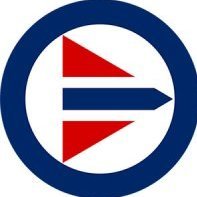


copy.thumb.jpg.d8f94c146f5d2da12880c4799901d6dc.jpg)

